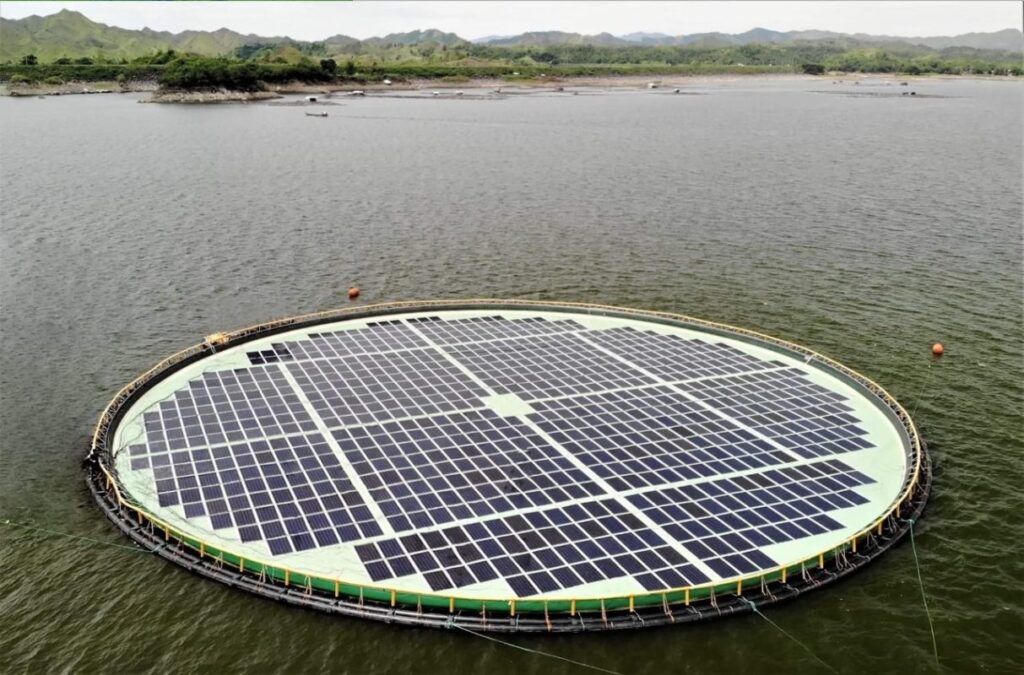Floating solar panels, also known as floating solar farms or floating photovoltaic (FPV) systems, are solar power installations that are designed to float on the surface of bodies of water, such as reservoirs, ponds, lakes, or even the open sea. These systems harness solar energy using photovoltaic panels mounted on buoyant platforms.
- Energy Generation: Floating solar panels generate electricity by capturing sunlight just like traditional ground-mounted or rooftop solar panels. They use photovoltaic cells to convert solar energy into electrical power.
- Space Utilization: Floating solar panels make efficient use of space that might otherwise go unused. They don’t require land, which is often limited or valuable, and they can be deployed on bodies of water, conserving land resources.
- Cooling Effect: Being situated on water can help cool the solar panels, which can improve their efficiency. Solar panels tend to operate less efficiently as they heat up, and the water beneath the panels dissipates heat, maintaining lower temperatures and enhancing overall performance.
- Reduced Evaporation: In some cases, floating solar panels can help reduce water evaporation from the reservoirs or ponds on which they are installed. This can be especially beneficial in arid regions where water conservation is crucial.
- Water Quality Improvement: The shading effect of floating solar panels can limit the growth of algae in the water, potentially improving water quality.
- Environmental Benefits: Floating solar panels can have a smaller environmental footprint compared to traditional solar installations, as they don’t require land clearing or habitat disruption. They can also be beneficial for aquatic ecosystems, as they provide shade and reduce water evaporation.
- Cost Savings: Construction costs for floating solar systems may be lower than those for ground-mounted systems in certain situations, particularly when land costs are high or limited.
Floating solar panels do come with their own set of challenges, such as maintenance in water environments, potential impacts on local ecosystems, and the need for secure mooring systems to withstand wind and water currents. Nevertheless, they represent an innovative approach to expanding renewable energy capacity, particularly in areas with limited available land for solar installations.


